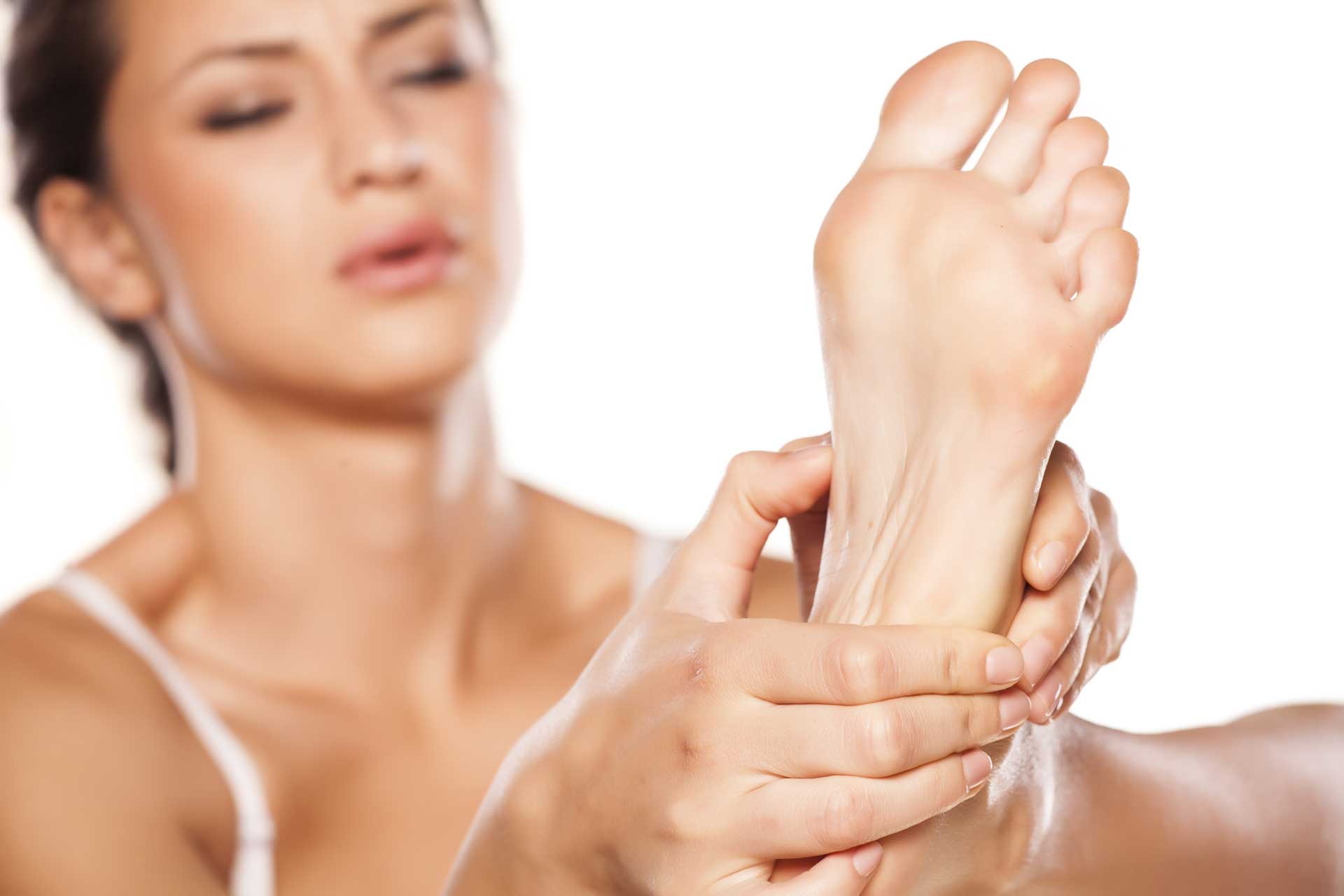Are you suffering from heel pain? It could be plantar heel pain AKA plantar fasciitis which is seen regularly in physiotherapy clinics. It causes tenderness and soreness on the sole of the foot under the heel which may extend sometimes into the arch of the foot. The prevalence and prognosis of this condition is not known and symptoms do tend to resolve over time in most people. Patients that present with plantar heel pain usually report heel pain first thing in morning after getting up out of bed, sometimes with an inability to put heel on ground. It can ease with movement however can worsen with prolonged weight bearing and after a period of inactivity. If you press on the heel where the plantar fascia inserts onto the calcaneus (heel bone) this will be tender/painful. In a lot of cases the onset of heel pain will have been precipitated by a recent increase in weightbearing activities.
As with most musculoskeletal injuries there are both conservative and non-conservative treatment options.
Conservative options
- Stretching & strengthening – the calf muscles and muscles on the base of the foot can provide short term pain relief. An easy way to stretch the sole of the foot is rolling your foot gently on a tennis ball increasing the pressure as you feel comfortable. In addition, exercises to strength the calf and foot muscles are required to reduce the chances of the pain returning.
- Manual Therapy – are techniques that your Chartered Physiotherapist can provide that involve releasing the muscles in the foot and mobilising the joints in the foot to make sure they are as flexible as possible. This may even involve releasing through the calf muscle as it has a strong influence on the foot musculature.
- Taping – use of zinc oxide tape on the sole of the foot can reduce pain especially in the early stages and increase function. The role of the tape is to support the arch to offload the plantar fascia insertion. This tape can initially be applied by your Chartered Physiotherapist and then the patient can be taught to apply this tape daily or every second day to manage symptoms.
- Customised foot orthotics – if taping has had a positive effect on symptoms foot orthotics should be considered for longer term use. These can either be bought off the shelf or fitted specifically by a podiatrist or orthotist. There role is to support the arch and cushion the heel.
- Night splints – work really well if tolerated in individuals who consistently have pain with the first step in the morning.
- Heel pads/cups – some individuals find these give relief but is not a consistent remedy.
Non-conservative options
- Corticosteroid injections – these are used in individuals where conservative treatments do not lead to the desired effect. The tend to be effective in relieving pain over a four to six week period however their effect over the longer term is not known and they do not come without possible complications in a small number of cases.
- Extracorporeal shock wave therapy – is a relatively new technique on the market. It does appear to be effective in some more stubborn cases however can be an uncomfortable treatment to endure.
Morton’s Neuroma is a painful condition that affects the ball of the foot usually between the third and fourth toe. It is caused by a thickening around the nerves leading to the toes possibly due to irritation, pressure or injury to the nerve leading to the toe. It may feel like you are standing on a pebble. Other symptoms reported are a burning pain that radiates into the toes and tingling/numbness between the toes.
Several factors can contribute to a Morton’s neuroma including wearing tight fitting or high heeled shoes that place extra pressure on the toes or ball of the foot. Certain sports that involve high impact or put pressure on the toes i.e. rock climbing. Individuals who already suffer from foot deformities i.e. bunions, hammertoes, high/low arches are at a higher risk of developing a neuroma.
Tips for managing a Morton’s Neuroma
- Ice massage with an ice cube across the top of the foot for 2-3minutes.
- Avoid high heels or tight fitting footwear.
- Take a break from high impact exercises for a few weeks to allow symptoms to settle.
- Trial an insert in shoe to reduce the pressure on the foot. These are a very specific shape to sit underneath the toes to offload the area.
- See a Chartered Physiotherapist to address any biomechanical issues that maybe overloading the foot contributing to the symptoms.
In the more severe cases that do not improve with the above suggestions a discussion with your GP regarding a corticosteroid maybe an option.

